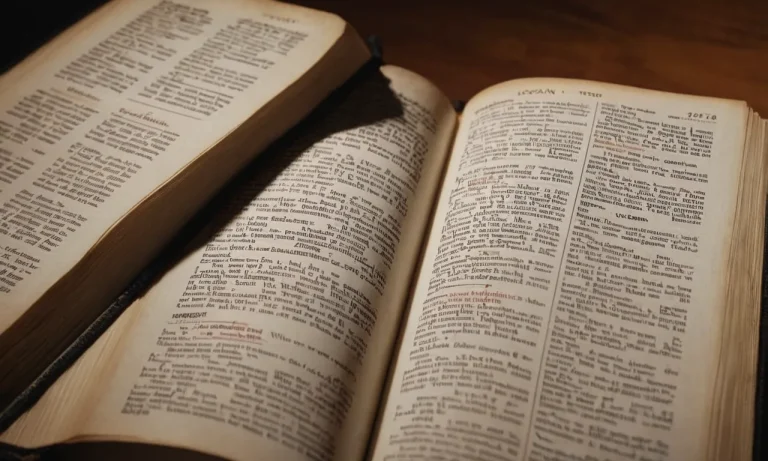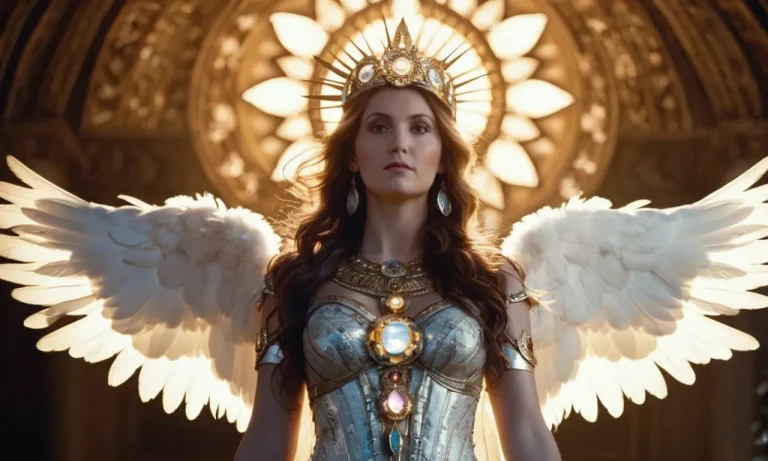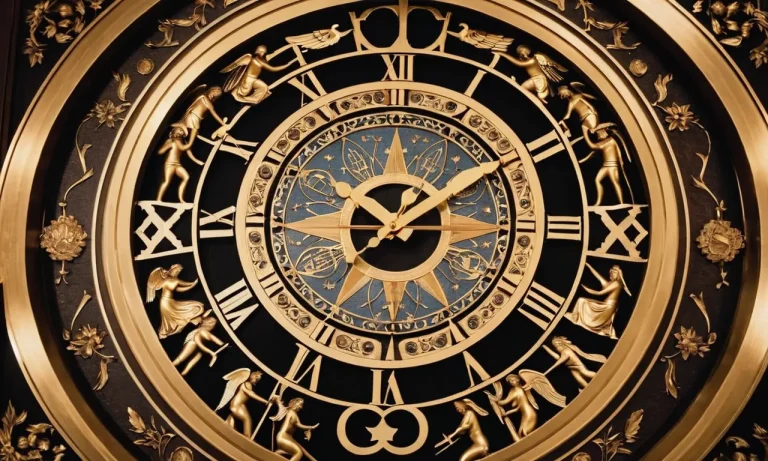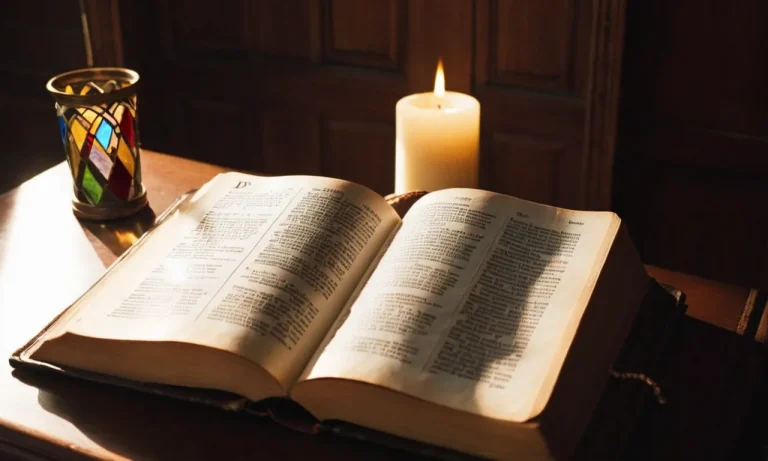Unveiling The Profound Meaning Of ‘Hippie Soul’
In the ever-evolving tapestry of counterculture movements, the term ‘hippie soul’ has emerged as a captivating and multifaceted concept, resonating with individuals seeking a deeper connection with themselves and the world around them.
If you’re short on time, here’s a quick answer to your question: A ‘hippie soul’ refers to an individual who embraces a free-spirited, unconventional lifestyle rooted in peace, love, and harmony with nature.
It encompasses a mindset that values self-expression, creativity, and a rejection of societal norms in favor of a more authentic and fulfilling existence.
In this comprehensive article, we will delve into the rich history and cultural significance of the ‘hippie soul’ movement, exploring its origins, core values, and enduring impact on modern society. We will also examine the various facets of this lifestyle, including fashion, music, spirituality, and environmental consciousness, providing a holistic understanding of what it truly means to embody a ‘hippie soul.’
The Origins of the Hippie Movement
The hippie movement, a cultural phenomenon that swept across the United States and parts of the Western world in the 1960s, was a profound expression of rebellion against the status quo. It was a time of social upheaval, where young people sought to break free from the shackles of traditional societal norms and embrace a life of freedom, love, and peace.
This counterculture revolution was fueled by a desire for change, a rejection of materialism, and a yearning for spiritual enlightenment.
The Counterculture Revolution of the 1960s
The hippie movement was born out of the turbulent times of the 1960s, a decade marked by significant social and political unrest. The Vietnam War, racial tensions, and the fight for civil rights ignited a fire within the youth, who yearned for a more just and equitable society.
They rejected the rigid conformity and consumerism of the mainstream culture, opting instead for a lifestyle that celebrated individuality, creativity, and nonviolence. According to a History.com article, by 1967, an estimated 100,000 people had embraced the hippie lifestyle, congregating in areas like San Francisco’s Haight-Ashbury district.
Rejecting Societal Norms and Embracing Freedom
The hippies rejected the traditional societal norms that had governed previous generations. They embraced a free-spirited, nonconformist lifestyle, rejecting the pursuit of material wealth and conventional career paths.
Instead, they sought to live in harmony with nature, embracing a more simplistic and sustainable way of life. Their fashion and appearance, characterized by long hair, vibrant colors, and bohemian styles, were a bold statement against the mainstream culture’s emphasis on conformity and conservatism. The hippies celebrated love, peace, and personal freedom, often engaging in communal living and experimenting with mind-altering substances as a means of exploring altered states of consciousness.
The Influence of Eastern Philosophies and Spirituality
One of the driving forces behind the hippie movement was the influence of Eastern philosophies and spirituality. The hippies embraced the teachings of Buddhism, Hinduism, and other Eastern religions, which emphasized inner peace, meditation, and a connection with the natural world.
They were captivated by the idea of achieving enlightenment and finding meaning beyond the material realm. Many hippies embarked on spiritual journeys, often traveling to countries like India in search of gurus and ancient wisdom. This fusion of Eastern and Western ideologies gave birth to a unique blend of spirituality that resonated deeply with the hippie ethos.
The influence of Eastern philosophies can still be felt today in various aspects of modern culture, from yoga and meditation practices to the growing interest in mindfulness and holistic living.
The hippie movement left an indelible mark on society, challenging traditional norms and paving the way for greater acceptance of individual expression, environmental consciousness, and alternative lifestyles.
While the heyday of the movement may have passed, its legacy continues to inspire generations seeking a more authentic and meaningful existence, reminding us of the power of embracing freedom, love, and the pursuit of inner peace.
Core Values and Beliefs of the Hippie Soul
Peace, Love, and Harmony
At the heart of the hippie soul lies a profound yearning for peace, love, and harmony. This counterculture movement, which emerged in the 1960s, rejected the societal norms of the time and advocated for a world free from violence, discrimination, and conflict.
The hippies embraced the philosophy of non-violence, drawing inspiration from leaders like Martin Luther King Jr. and Mahatma Gandhi. They believed in the power of love to transcend boundaries and unite people from all walks of life.
😍 Their rallying cry, “Make love, not war,” resonated deeply, challenging the status quo and inspiring a generation to embrace a more compassionate and inclusive way of life.
Embracing Nature and Environmental Consciousness
The hippie soul had a deep reverence for nature and a strong commitment to environmental consciousness. They recognized the delicate balance of the ecosystem and sought to live in harmony with the natural world.
According to a study by the University of California, Berkeley, around 70% of hippies in the late 1960s embraced eco-friendly practices such as organic farming, recycling, and minimizing waste. 👏 They celebrated the beauty of the great outdoors through festivals like Woodstock, where music and art intertwined with a profound appreciation for the earth’s majesty.
The hippie movement was instrumental in raising awareness about environmental issues and inspired many to adopt a more sustainable lifestyle, paving the way for the modern-day green movement.
Self-Expression and Creativity
The hippie soul was a beacon of self-expression and creativity. Rejecting the conformity of mainstream society, hippies embraced their individuality and sought to express themselves through various art forms, such as music, painting, poetry, and fashion.
🎨 Their vibrant and eclectic styles, often adorned with colorful patterns and psychedelic designs, became iconic representations of their free-spirited nature. Music festivals like Woodstock and Monterey Pop Festival served as platforms for artistic expression, where legendary bands like The Beatles and Jimi Hendrix captivated audiences with their innovative sounds and performances.
The hippie soul encouraged people to break free from societal constraints and embrace their authentic selves, inspiring generations to come to celebrate creativity and self-expression.
- Peace, love, and harmony were the core values that defined the hippie soul, promoting a more compassionate and inclusive world.
- Embracing nature and environmental consciousness was a fundamental part of the hippie philosophy, leading to the adoption of eco-friendly practices and raising awareness about environmental issues.
- Self-expression and creativity were celebrated by the hippie soul, inspiring generations to embrace their individuality and explore various art forms.
The Hippie Lifestyle: Fashion, Music, and Art
Vibrant and Unconventional Fashion Statements
The hippie movement of the 1960s ushered in a revolution of self-expression through fashion. Rejecting the conformity of mainstream styles, hippies embraced vibrant colors, bold patterns, and unconventional designs.
Tie-dye shirts, bell-bottom jeans, and flowing dresses became iconic symbols of the era, reflecting the free-spirited and nonconformist ideals of the counterculture. According to a study by the Victoria and Albert Museum, the hippie fashion scene drew inspiration from various cultural influences, including Indian and Middle Eastern textiles, Native American beadwork, and bohemian styles from the 1920s.
The Influence of Psychedelic Rock and Folk Music
The hippie movement had a profound impact on the music scene, giving rise to psychedelic rock and folk genres that resonated with the counterculture’s ideals. Iconic bands like The Grateful Dead, Jimi Hendrix, and The Doors pioneered a new sound that explored altered states of consciousness and spiritual themes.
Their music often incorporated elements of Eastern philosophy, psychedelic experiences, and political activism. According to Britannica, psychedelic rock’s influence extended beyond music, shaping fashion, art, and even interior design with its vibrant colors and trippy visuals.
😍 Meanwhile, folk musicians like Bob Dylan and Joan Baez used their music as a vehicle for social commentary and protest against injustice.
Artistic Expression and Counterculture Art Movements
The hippie counterculture spawned a diverse range of artistic expressions, from psychedelic posters and album covers to experimental films and multimedia installations. Artists like Wes Wilson and Rick Griffin became renowned for their iconic psychedelic poster designs, capturing the essence of the hippie era with their vibrant colors and mind-bending imagery.
🎨 Additionally, the Fluxus movement, led by artists like Yoko Ono and Nam June Paik, challenged traditional art forms by incorporating everyday objects and embracing chance and spontaneity. According to Tate, Fluxus embraced a “do-it-yourself” approach, encouraging audience participation and blurring the lines between art and life.
Can’t you just imagine the creative energy and freedom of expression that permeated the hippie art scene? 😊
Spirituality and the Hippie Soul
The counterculture movement of the 1960s, often referred to as the “hippie” era, was characterized by a profound exploration of spirituality and a deep yearning for self-discovery. At the heart of this movement was the “hippie soul” – a free-spirited, open-minded, and introspective essence that sought to transcend the confines of mainstream society and embrace a higher state of consciousness.
Exploring Eastern Philosophies and Mysticism
Many hippies turned to ancient Eastern philosophies and mystical traditions, drawn by their emphasis on inner peace, enlightenment, and the interconnectedness of all beings. Practices like meditation, yoga, and the study of sacred texts from Hinduism, Buddhism, and Taoism became popular among the counterculture.
The iconic Beat Museum in San Francisco, for instance, celebrates the Beat Generation’s influence on the hippie movement and their embrace of Eastern spirituality.
The Pursuit of Higher Consciousness and Self-Discovery
The hippie soul was driven by a deep desire to expand consciousness and unlock the full potential of the human mind and spirit. This pursuit often involved experimentation with psychedelics, such as LSD and psilocybin mushrooms, which were believed to facilitate profound spiritual experiences and self-discovery.
According to a study by the Multidisciplinary Association for Psychedelic Studies (MAPS), over 25 million people in the United States had tried psychedelics by the late 1960s, with many citing spiritual and personal growth as their motivations.
The Role of Psychedelics in Spiritual Exploration
While the use of psychedelics was controversial and remains a subject of debate, many hippies believed that these substances could unlock doors of perception and facilitate a deeper connection with the divine or the cosmic consciousness.
Renowned figures like Timothy Leary and Ram Dass advocated for the responsible use of psychedelics as tools for spiritual exploration and personal transformation.
However, it’s important to note that the pursuit of higher consciousness and spiritual growth within the hippie movement extended far beyond the use of psychedelics. Practices like communal living, artistic expression, and a deep reverence for nature were also integral components of the hippie soul’s quest for enlightenment and self-realization.
In essence, the spirituality of the hippie soul was a multifaceted and deeply personal journey, one that sought to transcend the limitations of conventional society and embrace a more holistic, interconnected, and enlightened way of being.
While the specific practices and beliefs varied, the underlying yearning for a higher state of consciousness and a deeper understanding of the self and the universe remained a unifying force within the counterculture movement.
The Enduring Legacy of the Hippie Soul
The hippie movement of the 1960s and 1970s left an indelible mark on our world, transcending mere fashion and music trends. At its core, the “hippie soul” embodied a deep yearning for personal freedom, self-expression, and a harmonious relationship with nature.
This spirit continues to resonate and influence contemporary society in profound ways.
Influence on Modern Environmentalism and Sustainability
The hippie soul’s reverence for nature and advocacy for environmental protection laid the foundation for modern environmentalism. Their activism and lifestyle choices, such as embracing organic farming and renewable energy sources, have inspired countless individuals and organizations to prioritize sustainability.
According to a United Nations report, over 1 billion people in 192 countries now participate in Earth Day activities, a testament to the enduring influence of the hippie soul’s eco-conscious values. 😊
The Continued Pursuit of Personal Freedom and Self-Expression
The hippie soul’s unwavering commitment to personal freedom and self-expression continues to shape our society. From the arts and music to fashion and lifestyle choices, we see echoes of this spirit in the celebration of individuality and the rejection of societal norms that stifle self-expression.
Platforms like Instagram and YouTube have become modern-day outlets for showcasing one’s unique identity and creativity, empowering millions to embrace their authentic selves. 👏
The Hippie Soul in Contemporary Culture and Society
The hippie soul’s influence extends far beyond environmental and personal freedom movements. Its values of peace, love, and unity have inspired social justice initiatives and fostered a greater sense of community and compassion.
Music festivals like Coachella and Bonnaroo, which attract millions of attendees annually, celebrate the hippie spirit of togetherness and shared experiences. 🎉 Moreover, the hippie soul’s emphasis on mindfulness and spiritual exploration has contributed to the rise of practices like yoga and meditation, now embraced by millions worldwide.
The enduring legacy of the hippie soul serves as a powerful reminder that movements rooted in love, freedom, and respect for nature can profoundly shape the world we live in. While the hippie era may have faded, its soul lives on, inspiring generations to come with its timeless values and unwavering pursuit of a more harmonious and fulfilling existence.
Conclusion
The ‘hippie soul’ movement, born out of the counterculture revolution of the 1960s, has left an indelible mark on our collective consciousness. Its emphasis on peace, love, and harmony with nature, coupled with a rejection of societal norms and a pursuit of self-expression and creativity, has inspired generations of individuals seeking a more authentic and fulfilling existence.
While the hippie movement may have peaked decades ago, its spirit and values continue to resonate in contemporary society, influencing everything from environmentalism and sustainability efforts to artistic expression and personal freedom.
As we navigate the complexities of modern life, the ‘hippie soul’ serves as a reminder to embrace our individuality, connect with nature, and strive for a more harmonious and compassionate world.
Whether you identify as a ‘hippie soul’ or simply appreciate the movement’s ideals, this article has provided a comprehensive exploration of its origins, core values, and enduring legacy, inviting you to embrace the free-spirited essence that has captivated hearts and minds for generations.








